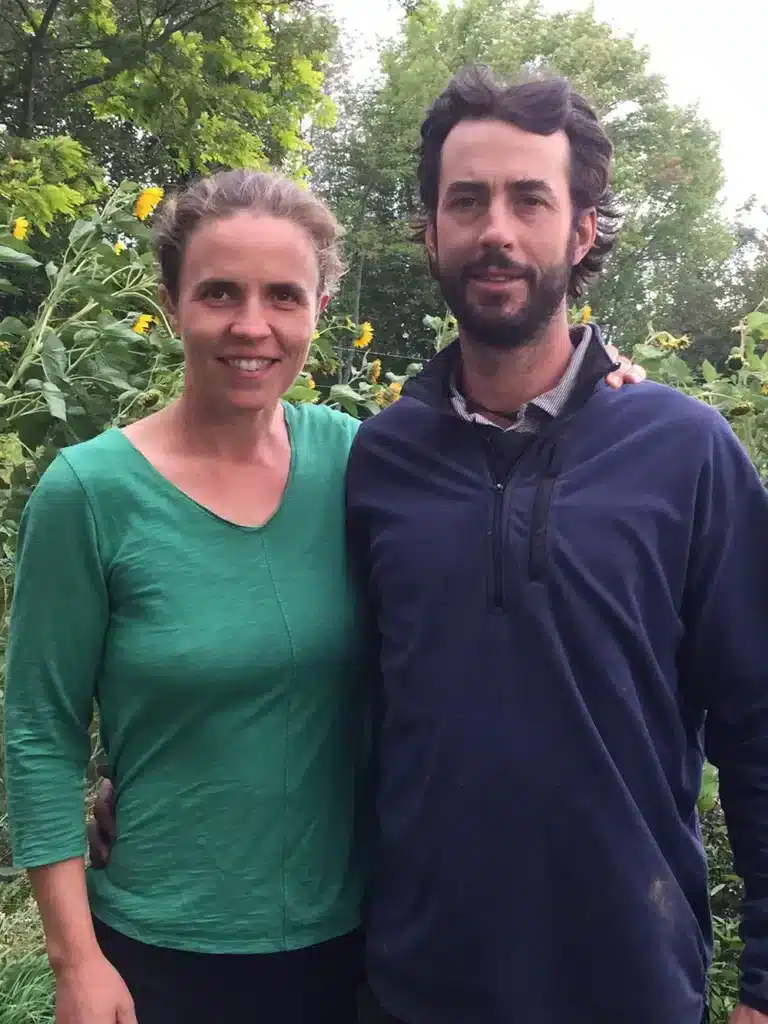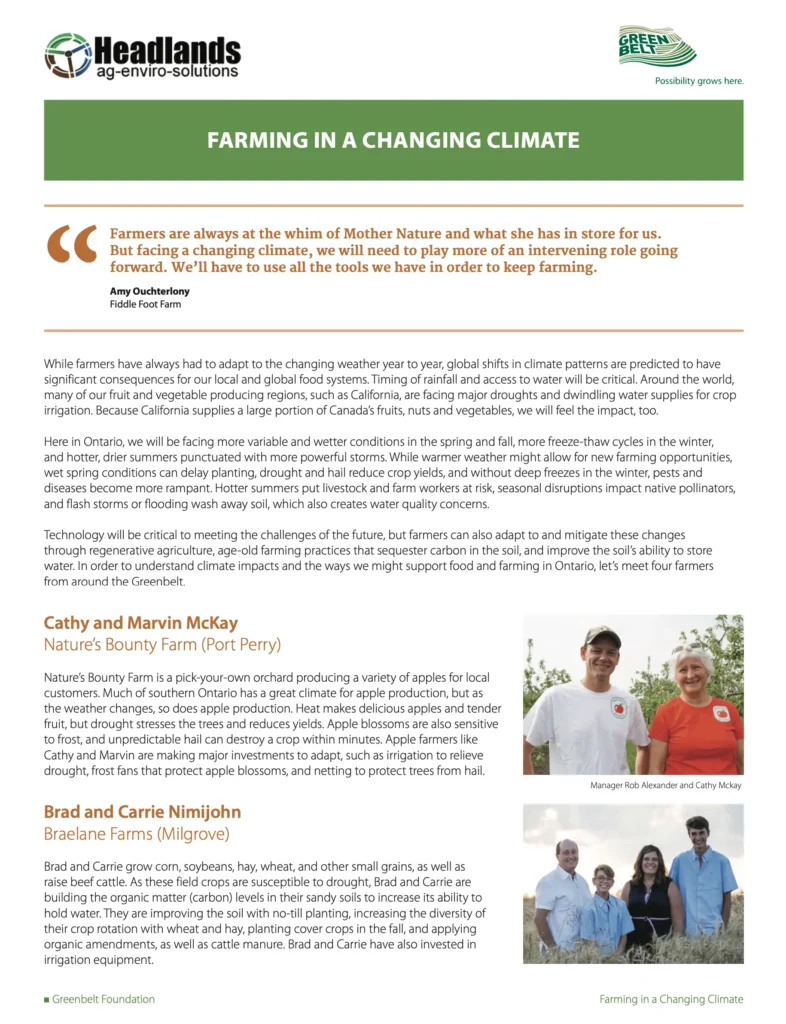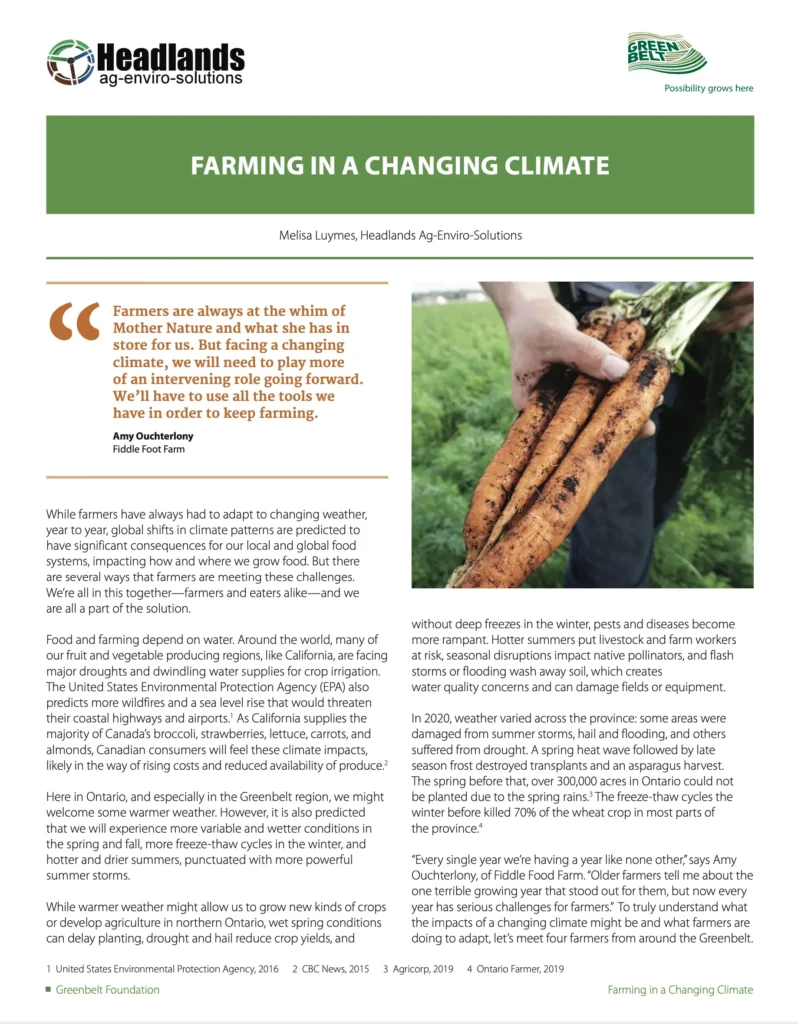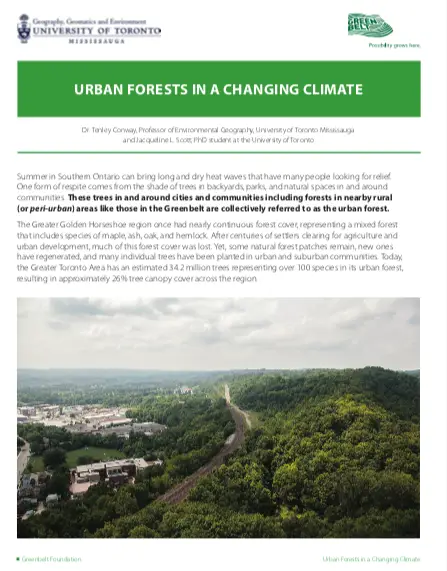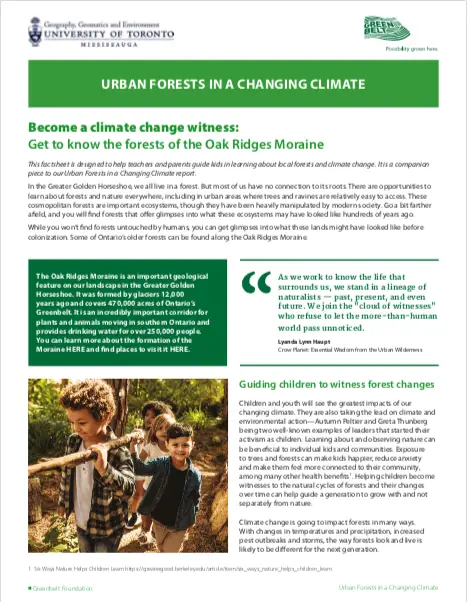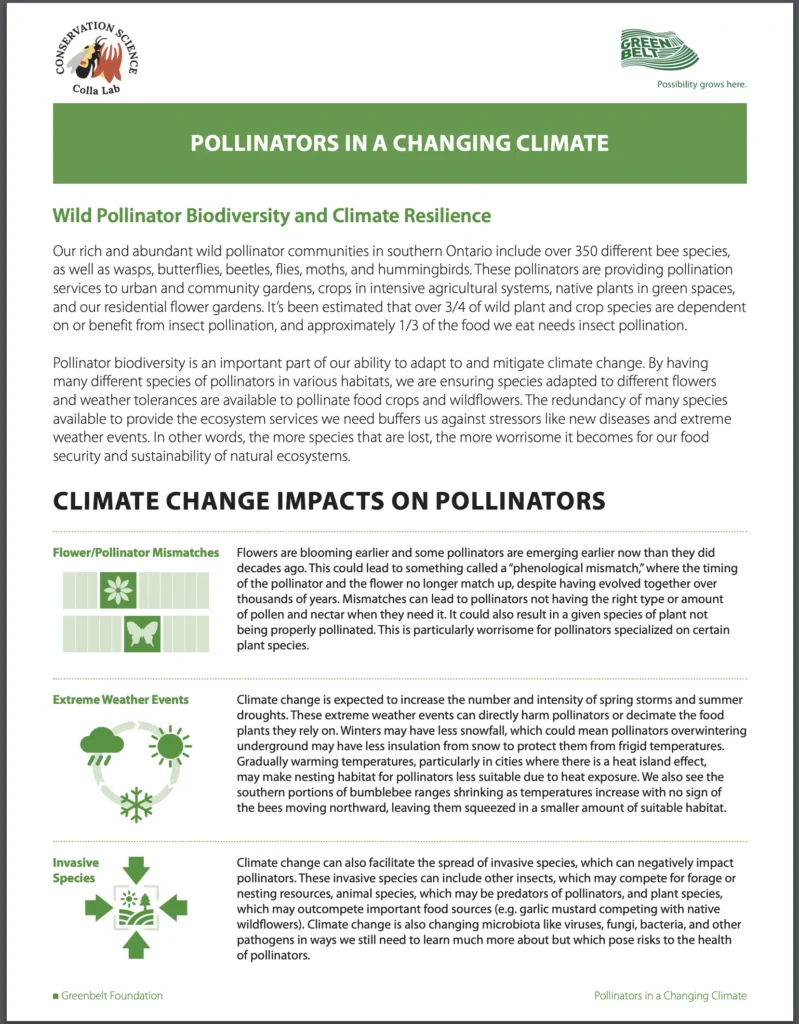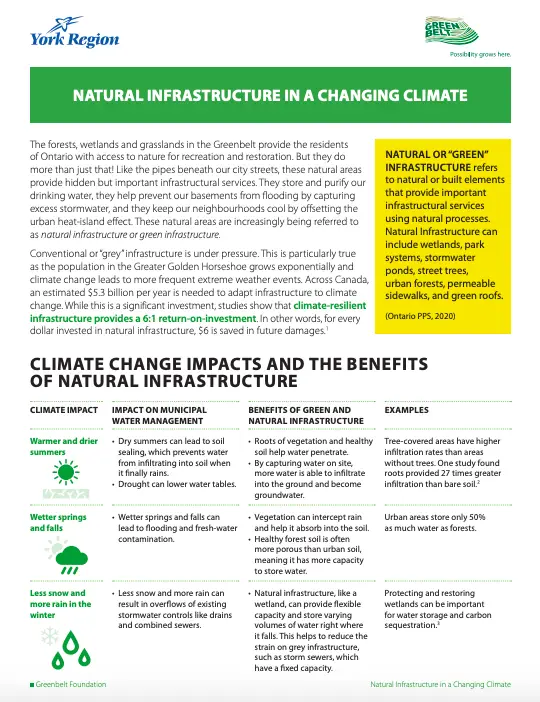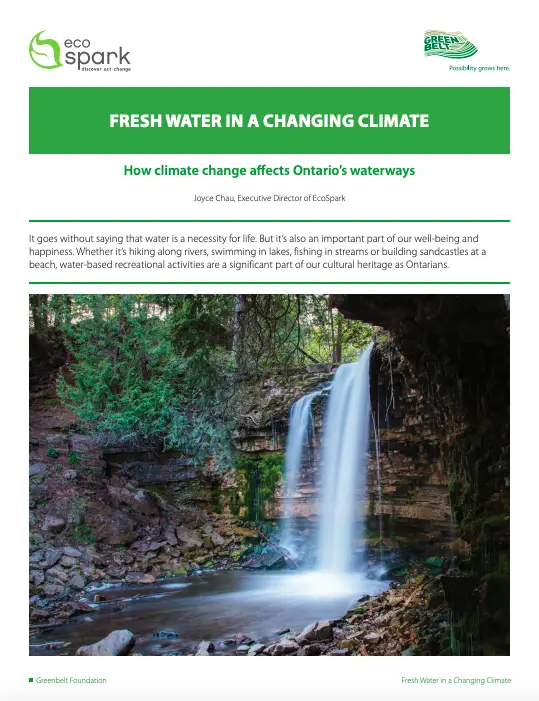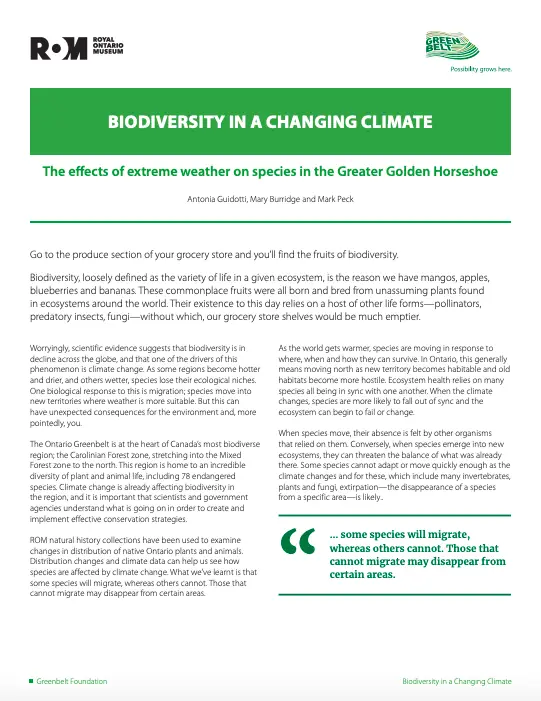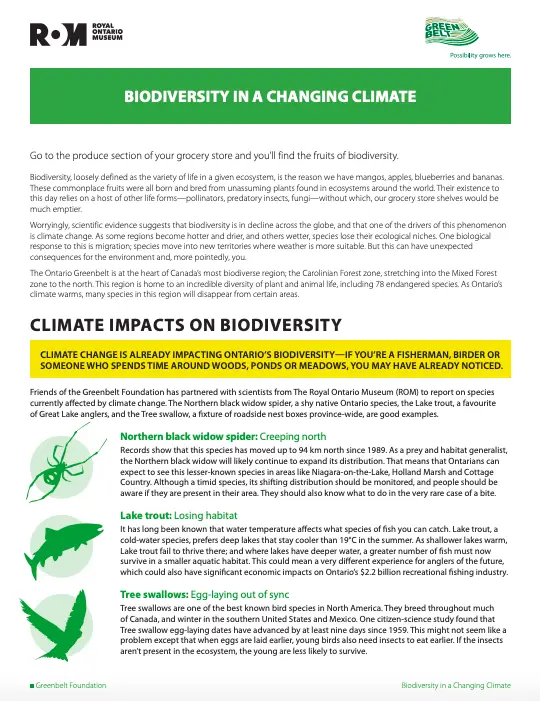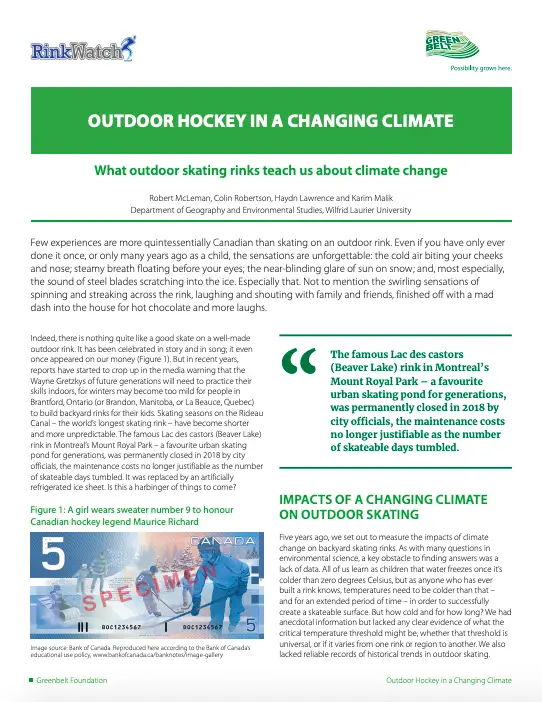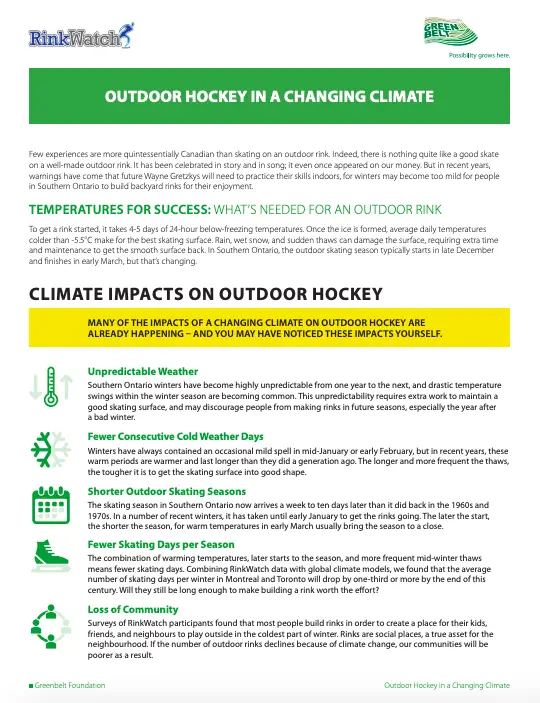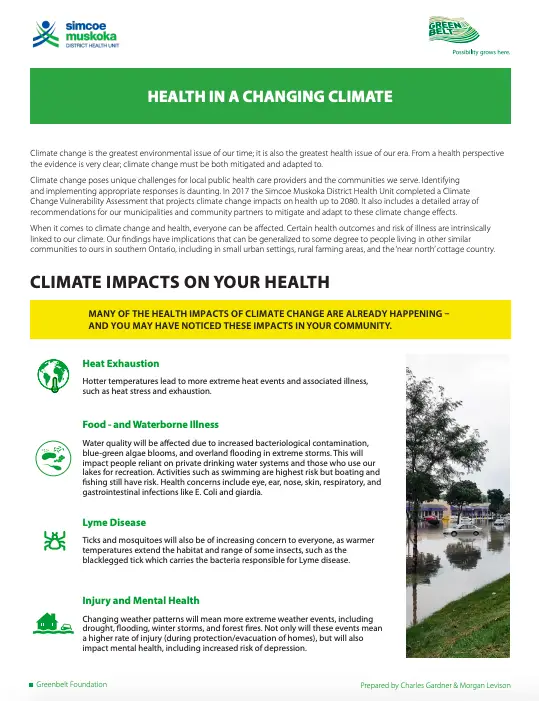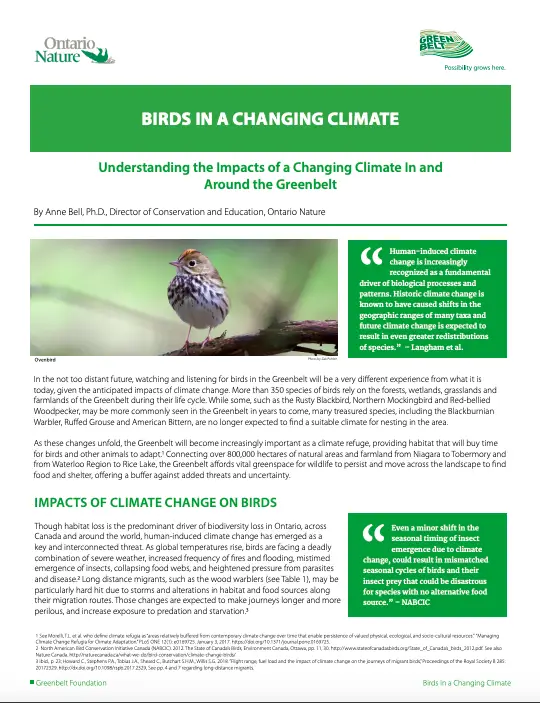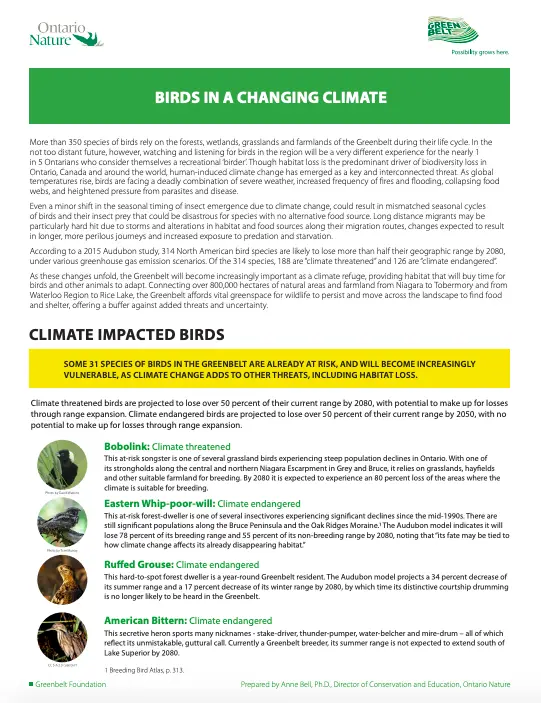Farming in a Changing Climate
Working in harmony with the weather has always been one of the greatest challenges for farmers. Now, with the climate changing at a rapid pace, it is important to find out how farmers are adapting their practices and what we can do to support them.
While farmers have always had to adapt to changing weather, year to year, global shifts in climate patterns are predicted to have significant consequences for our local and global food systems, impacting how and where we grow food.
Here in Ontario, and especially in the Greenbelt region, we might welcome some warmer weather. However, it is also predicted that we will experience wetter conditions, increased freeze-thaw and drier summers. While warmer weather might allow us to grow new kinds of crops or develop agriculture in northern Ontario, wet spring conditions can delay planting, drought and hail reduce crop yields, and without deep freezes in the winter, pests and diseases become more common. Hotter summers put livestock and farm workers at risk, seasonal disruptions impact native pollinators, and flash storms or flooding wash away soil, which creates water quality concerns and can damage fields or equipment.
But, our farmers are getting prepared. For our newest and final In a Changing Climate report of the year, we met with four Greenbelt farmers to understand climate impacts, how they are innovating and the ways we might support farming in Ontario.
Meet Brad and Carry Nimijohn from Bralene Farms, Cathy and Marvin Mckay from Nature’s Bounty Farm, Amy Ouchterlony and Graham Corbett from Fiddle Foot Farms and Isaac Crosby from Evergreen Brickworks.
Read the summary and full report to learn more:
Urban Forests in a Changing Climate
It is important that we recognize and understand the essential role our forests play in helping communities adapt and mitigate to climate change. Trees have the unique ability to store carbon, reducing the amount of carbon dioxide in the atmosphere. Through producing large amounts of shade, they keep our cities cooler and can decrease flooding as their leaves and branches intercept water, reducing the amount of run-off when it rains.
Urban trees play an important role helping communities mitigate and adapt to a changing climate. A recent report by the City of Toronto estimated that Toronto’s urban forest stores over 1.1 million metric tonnes of carbon.
These trees in and around cities and communities including forests in nearby rural areas like those in the Greenbelt are collectively referred to as the urban forest. Currently the Greater Toronto Area has an estimated 34.2 million trees representing over 100 species in its urban forest, resulting in approximately 26% tree canopy cover across the region. However, racialized and other marginalized communities typically have reduced access to high-quality greenspace near home.
Our forests are currently facing numerous threats from development to climate change itself. Building accessible and resilient forests is an important step for the health of our communities.
In collaboration with University of Toronto professor, Tenley Conway, and University of Toronto PhD Student and Founder of Black Outdoors, Jacqueline L. Scott, this issue focuses on how forests are impacted by climate change and how access to these important spaces is not equitable along racial lines. At the end of each report below, you will find simple ways you can take action and support the health of our trees.
Read the full report and fact sheet on becoming a climate change witness below:
This report is one instalment of the Greenbelt’s In a Changing Climate series. For this ongoing project, the Foundation continues to partner with experts to better understand how climate change is affecting many aspects of our lives, and ways that we can individually and collectively respond to these challenges. Click here to explore other reports and expert interviews in this series.
Pollinators in a Changing Climate
With the projected changes to our climate, it is more important than ever to understand the role pollinators play in our ability to adapt to and mitigate climate change. Our rich and abundant wild pollinator communities in southern Ontario include over 350 different bee species, wasps, butterflies, beetles, flies, moths, and hummingbirds who provide pollination services to urban and community gardens, crops in intensive agricultural systems, native plants in green spaces, and our residential flower gardens.
It’s been estimated that over 3/4 of wild plant and crop species are dependent on or benefit from insect pollination, and approximately 1/3 of the food we eat needs insect pollination.
These pollinators are providing a critical ecosystem service: they move pollen from flower to flower, allowing the plant to produce fruit and seed through cross-fertilization, creating more redundancy of species which helps buffers us against stressors like new diseases and extreme weather events.
In partnership with Sheila R. Colla, PhD, Assistant Professor in Environmental Studies, York University, we’re exploring the impacts climate change is having on our pollinator communities and how you can help. In this educational resource, we provide an overview on the important work of Souther Ontario pollinators, the challenges they face today and highlight simple ways you can take action and support the conservation of pollinators and in turn, create a more resilient climate.
Read the full report and summary below:
This report is one installment of the Greenbelt’s In a Changing Climate series. For this ongoing project, the Foundation continues to partner with experts to better understand how climate change is affecting many aspects of our lives, and ways that we can individually and collectively respond to these challenges. Click here to explore other reports and expert interviews in this series.
Cover photo by Olivia Lane
Natural Infrastructure in a Changing Climate
With the projected changes to our climate, it is more important than ever to consider the role green infrastructure can have on our communities. Green infrastructure in Ontario’s Greenbelt, particularly its forests, wetlands and grasslands provide essential infrastructure services for all Ontarians. They protect our fresh-water sources, and provide storage and purification of our drinking water; they mitigate flood risks, keeping our properties safe; and offset urban heat-island effect, keeping our cities cool during high temperature days.
Green infrastructure plays a critical role in mitigating the risks posed by extreme weather events and provides a range of economic, environmental, individual and social benefits.
Studies show that climate-resilient infrastructure provides a 6:1 return-on-investment.
In partnership with Jenny Hill, Assistant Dean, Academic Planning and Governance at the University of Toronto, and with contributions from The Regional Municipality of York, we’re exploring the positive impacts natural infrastructure can have on a changing climate. In this educational resource, we analyze the economic return of climate-resilient infrastructure, highlight unexpected forms of water management, and provide you with simple ways you can take action and support natural infrastructure at the individual, community and municipal levels.
Read the full report and fact sheet below:
This report is one instalment of the Greenbelt’s In a Changing Climate series. For this ongoing project, the Foundation continues to partner with experts to better understand how climate change is affecting many aspects of our lives, and ways that we can individually and collectively respond to these challenges. Click here to explore other reports and expert interviews in this series.
Fresh Water in a Changing Climate
It goes without saying that water is a necessity for life. But it’s also an important part of our well-being and happiness. Whether it’s hiking along rivers, swimming in lakes, fishing in streams or building sandcastles at a beach, water-based recreational activities are a significant part of our cultural heritage as Ontarians.
Unfortunately, climate change is having profound effects on watersheds across the province. Summers are getting wetter, but inconsistent rainfall also results in lengthy dry periods. Dry spells are compounded by warmer winters with less snowpack, contributing to low water levels in summer. Spring thaws often happen more suddenly, meaning there is less groundwater recharge and more runoff. And, as summers get hotter, water temperatures are also rising.
The recent history of intensive industrial and urban development in southern Ontario has also significantly impacted local water systems. Conservation Authorities have determined that the water quality in half of the rivers and streams assessed in the Oak Ridges Moraine and the Greenbelt area are degraded and at risk of further degradation, potentially exacerbated by future, unaccounted-for development and infrastructure projects.
Ontario has 250,000 lakes, containing about one-fifth of the world’s fresh water. Unfortunately, this unique offering could be undermined by climate change.
For this instalment in the series, Joyce Chau, Executive Director of EcoSpark, discusses the multi-faceted importance of water.
Read the full report below:
Mental Health in a Changing Climate
With support from the Canadian Environmental Grantmakers Network and the Ivey Foundation, the Greenbelt Foundation and the Alliance for Healthier Communities explore the effects of climate change on youth, women and newcomers.
Researcher Catherine Macdonald from Alliance for Healthier Communities and Katie Hayes, PhD candidate at University of Toronto Dalla Lana School of Public Health examine the impacts of climate change on the physical and mental well-being of youth, women and newcomers – groups most often at risk of facing barriers to care – and local support options and programs in and around the Greenbelt region.
Read the full reports below:
Biodiversity in a Changing Climate
The entire Greater Golden Horseshoe region is being affected by a combination of climate change and population growth. It is now commonly accepted that current climatic changes and extreme weather impacts are just the beginning. The Greenbelt Foundation partnered with experts to better understand how climate change is affecting many aspects of our lives, and ways that we can individually and collectively respond to these challenges.
Their articles highlight how the Greenbelt supports climate action in a number of important and interconnected ways that affect our daily lives. It is important for people to understand that they have a relationship with the Greenbelt, and it’s not just a one-way street! It will help us and our communities adapt to climate change, but it is important we help it do the same.
Scientific evidence suggests that biodiversity is in decline across the globe, and that one of the drivers of this phenomenon is climate change.
For this instalment in the series, Antonia Guidotti, Mary Burridge, and Mark Peck of the Royal Ontario Museum explore how a changing climate is impacting biodiversity, and what we can do about it.
Read the full report and fact sheet below:
And be sure to check out our interview with Antonia Guidotti, an Entomologist at the Royal Ontario Museum:
For more information on the Royal Ontario Museum, please visit www.rom.on.ca.
Check out more Citizen Science initiatives, below:
Hockey in a Changing Climate
The entire Greater Golden Horseshoe region is being affected by a combination of climate change and population growth. It is now commonly accepted that current climatic changes and extreme weather impacts are just the beginning. The Greenbelt Foundation partnered with experts to better understand how climate change is affecting many aspects of our lives, and ways that we can individually and collectively respond to these challenges.
Their articles highlight how the Greenbelt supports climate action in a number of important and interconnected ways that affect our daily lives. It is important for people to understand that they have a relationship with the Greenbelt, and it’s not just a one-way street! It will help us and our communities adapt to climate change, but it is important we help it do the same.
The fate of the outdoor skating rink is symptomatic of the many challenges we must confront in the face of a rapidly changing climate.
For this instalment in the series, Robert McLeman of Rink Watch and Wilfrid Laurier University explores how a changing climate is impacting backyard hockey, and what we can do about it.
Read the full report and fact sheet below:
Be sure to check out our interview with Robert McLeman, Associate Professor of Geography & Environmental Studies at Wilfrid Laurier University:
Watch the full series HERE.
For more information on Rink Watch, visit www.rinkwatch.org.
Photo: Nicholas Kuhl
Health in a Changing Climate
The entire Greater Golden Horseshoe region is being affected by a combination of climate change and population growth. It is now commonly accepted that current climatic changes and extreme weather impacts are just the beginning. The Greenbelt Foundation partnered with experts to better understand how climate change is affecting many aspects of our lives, and ways that we can individually and collectively respond to these challenges.
Their articles highlight how the Greenbelt supports climate action in a number of important and interconnected ways that affect our daily lives. It is important for people to understand that they have a relationship with the Greenbelt, and it’s not just a one-way street! It will help us and our communities adapt to climate change, but it is important we help it do the same.
Climate change is the greatest environmental issue of our time; it is also the greatest health issue of our era.
For this instalment in the series, the Simcoe Muskoka District Health Unit explores how a changing climate is impacting our health, and what we can do to take action.
Read the report and fact sheet below:
And be sure to check out our interviews with Dr. Charles Gardner and Morgan Levison of the Simcoe Muskoka District Health Unit:
For more information on the Simcoe Muskoka District Health Unit, visit www.simcoemuskokahealth.org
Photo: Sam Payne
Birds in a Changing Climate
The entire Greater Golden Horseshoe region is being affected by a combination of climate change and population growth. It is now commonly accepted that current climatic changes and extreme weather impacts are just the beginning. The Greenbelt Foundation partnered with experts to better understand how climate change is affecting many aspects of our lives, and ways that we can individually and collectively respond to these challenges.
Their articles highlight how the Greenbelt supports climate action in a number of important and interconnected ways that affect our daily lives. It is important for people to understand that they have a relationship with the Greenbelt, and it’s not just a one-way street! It will help us and our communities adapt to climate change, but it is important we help it do the same.
Some 31 species of birds in the Greenbelt are already at risk, and will become increasingly vulnerable as climate change adds to other treats, including habitat loss.
For this instalment in the series, Ontario Nature explores how a changing climate is impacting birds and birding, and what we can do to take action.
Read the full report and fact sheet below:
For more information on Ontario Nature, visit ontarionature.org.



